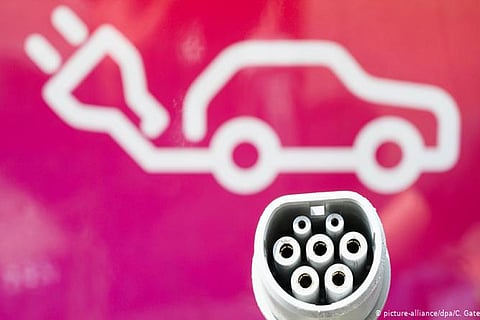

Chennai
Although electric cars, commercial vehicles and e-bikes are gaining ground, their limited ranges, high prices, a cumbersome charging infrastructure and resource-intensive battery production are delaying a rapid turnaround. For electric vehicles to come into more widespread use, batteries must become even more powerful, durable, sustainable and cost-effective.
Sodium instead of lithium
The solution could be sodium-ion batteries, whose development has recently made astonishing progress. In the foreseeable future, they could replace the lithium-ion batteries currently used not only in electric vehicles, but also in smartphones and laptops. The two alkali metals lithium and sodium are chemically similar. Although sodium does not have the energy density of the comparatively rare lithium, it is cheaply available.
Currently, however, the performance of sodium-ion batteries lags behind that of lithium-ion batteries by about 20 years. For decades, research has been concentrated solely on the more powerful lithium. Now however, there are not only groundbreaking scientific publications, but also very promising prototypes. A South Korean sodium-ion battery managed to handle about 500 complete charging cycles before its capacity dropped to 80%, according to a May 2020 publication.
A battery with a slightly different chemical structure devised by a US-Chinese research group achieved 450 charge cycles with a similar charging capacity. And a Chinese sodium-ion battery had a slightly lower capacity, but still retained 70% of its capacity after 1,200 cycles of quick 12-minute charging. All this may not sound like much, but in practice these batteries would probably survive many more charge cycles, because in everyday life batteries tend to be only partially charged and discharged.
The complete loading and unloading of a battery in an experiment puts much more strain on the cell. In addition, sodium-ion technology does not consume any scarce resources. The production of the cathodes does not require rare lithium salts; simple table salt is sufficient. Powerful anodes can be produced from lignite, wood and other biomass. Cobalt or similar rare substances are also not required.
Multilayer solution
However, sodium has two disadvantages. For one, it is three times heavier than lithium, so sodium-ion batteries are also heavier, even though lithium accounts for less than 5% of the total weight of a battery. In addition, sodium batteries are less powerful because they inevitably lose around 10% of their energy density due to a 0.3-volt lower cell voltage. This is owing to the fact that the graphite anodes that have been used up to now in batteries absorb too little sodium.
Fortunately, sodium-ion batteries are no longer just a theoretical concept. A breakthrough seems imminent that will see them become practical reality. The latest research results show that there are already tangible, affordable and resource-saving alternatives to the expensive lithium-ion batteries and that their performance can possibly be significantly increased by multilayer storage.
It will certainly take some time before sodium-ion batteries reach a stage of technical maturity and can be produced in large quantities and installed in electric vehicles or mobile phones. But when that does happen, the changeover from lithium- to sodium-ion batteries should be largely unproblematic due to the fairly similar technology involved.
— This article has been provided by Deutsche Welle
Visit news.dtnext.in to explore our interactive epaper!
Download the DT Next app for more exciting features!
Click here for iOS
Click here for Android